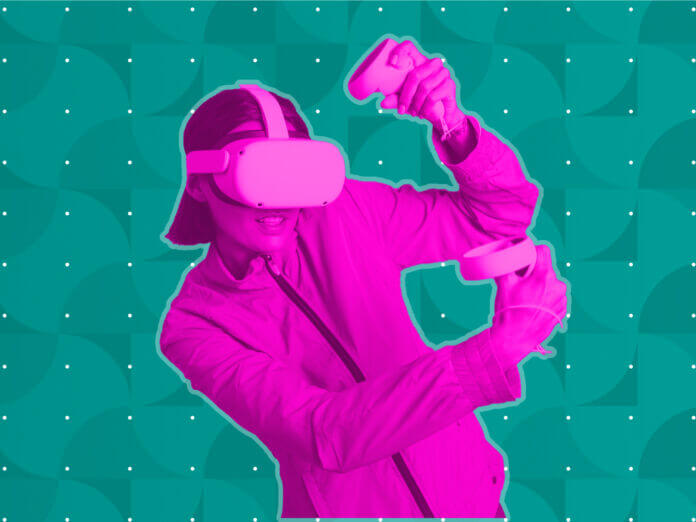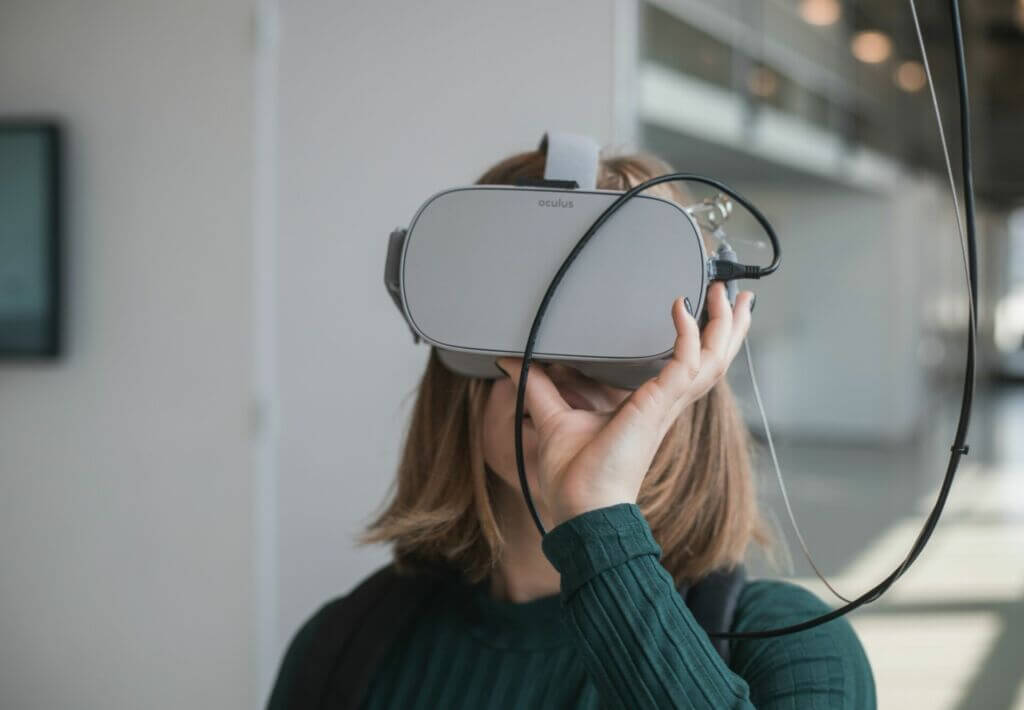
Even before the first portable screen, the tech industry has been working on new and novel ways to integrate technology into the lives of consumers. Particularly for its ability to facilitate social spaces and interactions, XR, or Extended Reality, has been a hot topic in the immersive tech industry, introducing its own variety of ways to connect and interact with the world around us. With new interactions come new ways to gamify the environment, and XR casts a wide umbrella on unique ways to facilitate social interaction and community.
XR – Virtual vs. Augmented vs. Mixed Reality
The different kinds of XR are typically defined by how “immersive” they are, or how much they act upon and integrate a user’s physical space.
- Virtual Reality (VR) represents full immersion, separating the user from their physical space and placing them in a digital environment full of entirely digital elements. Many VR games on popular headsets are like this, such as “Beat Saber”, “Superhot”, or “VRChat.”
- Augmented Reality (AR) represents partial immersion with no interaction with the real world. This includes games such as “Pokemon GO”, “Ingress”, and sometimes even geocaching.
- Mixed Reality (MR) represents partial immersion that interacts with the real world. Things like Snapchat or Instagram filters, for example, respond to changes in the physical world and adapt to match them.
XR has been employed in a variety of ways in the modern tech industry, such as through training simulations, interactive education in museums, and a large collection of games. When it comes to multiplayer games, however, what kind of challenges does an XR game developer have to overcome in the face of new interaction modes?
Multiplayer Server Space
As with any other multiplayer game, some sort of communication mode is required to facilitate multiplayer play. Traditionally, this is done with dedicated servers that host user interaction information. There are two primary ways of setting up a multiplayer server connection:
Peer-to-Peer

A peer-to-peer (P2P) multiplayer game requires one player’s device to connect to another player’s device, creating a multiplayer connection based on the host’s client specifications. P2P connections are common in many old multiplayer games like “Halo” or “Starcraft”, and require less oversight and management from a game developer. This comes at the cost of potential instability, latency, and cheating opportunities, which can be detrimental to a competitive or timing-focused multiplayer game.
Client-to-Server
A client-to-server (C/S) based multiplayer game requires all player’s devices to connect to a central dedicated game server, which hosts all interactions and game information rather than using a player client’s limited hardware.
In C/S gaming, the only interaction latency limiter is the client system’s internet speed, meaning that competitive and fast-paced games can have more true and timely interactions than P2P servers. C/S setups incur greater costs on the game developer, however, as they are required to host servers themselves or pay a third party to host servers for them.
Though not directly related to VR, server space is an incredibly important consideration to make. VR devices have limited capabilities with their smaller form factors and sometimes portable nature, meaning that hardware and internet connection requirements become that much tighter for VR developers.
Body Tracking

Body tracking is one of the primary challenges of VR game design, and is largely dependent on the type of game being developed. While some multiplayer games may only make use of the head and hand positions, like “Beatsaber” or “Gorilla Tag”, more complicated games may need more body tracking information to facilitate the game experience.
For such cases, the headset and hand-controller solution is combined with cameras and sometimes even treadmills to facilitate a higher sense of immersion and more relevant data points, allowing for a large variety of interaction styles.
Balance and Accessibility
Game balance and accessibility are some of the most important considerations a game developer can make. An unbalanced game can make for an unfun or frustrating game to play, while a game that doesn’t account for different kinds of user abilities and shapes can make a product that becomes completely inaccessible to an entire demographic of people.
As VR is a relatively new technology as well, proper VR etiquette such as literacy with common VR interaction buttons, proper headset/handset orientation, and even more physical reactions like motion sickness and eye fatigue can become issues with new/unfamiliar users. As such, responsible technology design should always be at the forefront of a developer’s process, multiplayer VR game or not.
A New Type of Gameplay
Innovations necessitate new challenges, and there are many things developers can do to minimize bad outcomes from challenges that occur during the design process. Hardware best practices like low-latency server setups, fast-loading assets with low polycounts and simple textures, and limiting the use of particle engines are all classic design choices for a fast-running game, and these practices become even more effective when designing for digital environments.
Paying special care to accessibility through heavy playtesting with a variety of demographics can help uncover any potential problems that may exist within the game, and a strong iteration and bug-testing process will ensure longevity and health for the game after its release. Though there are certainly many challenges facing today’s multiplayer VR developers, there are many solutions to fall back on as well.
Tweet
Share
Share
- Virtual Reality
- Augmented Reality
- Entertainment and Tourism
- Mixed Reality
- Virtual Reality
- Augmented Reality
- Entertainment and Tourism
- Mixed Reality
